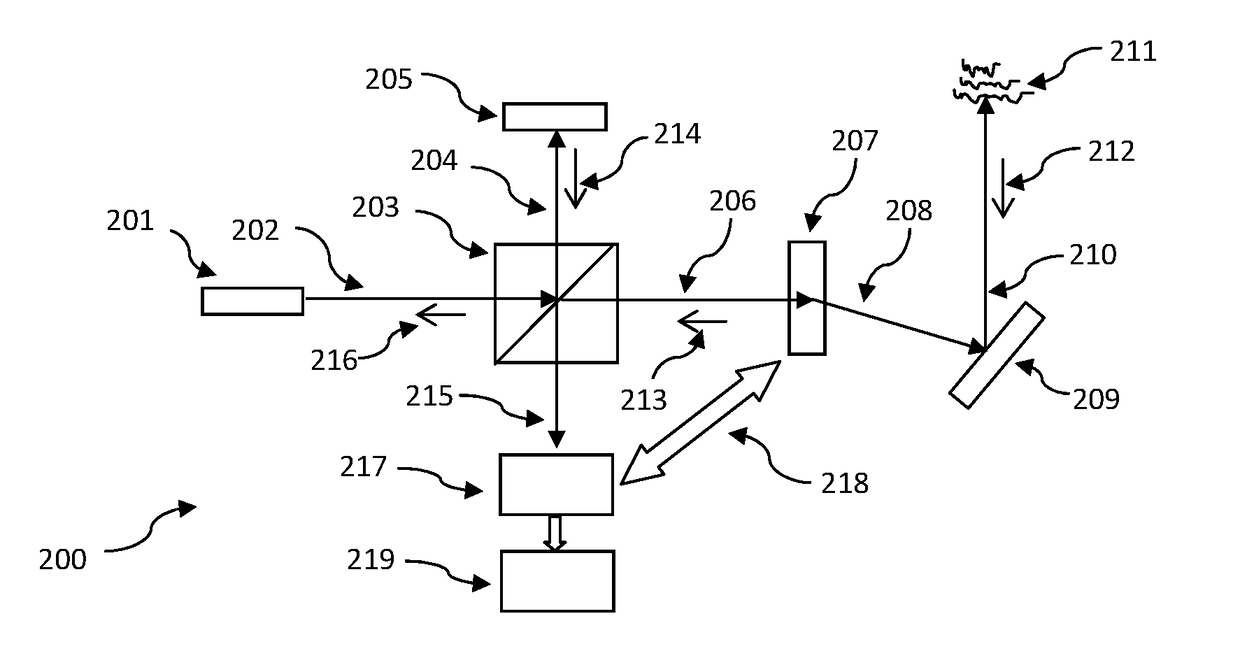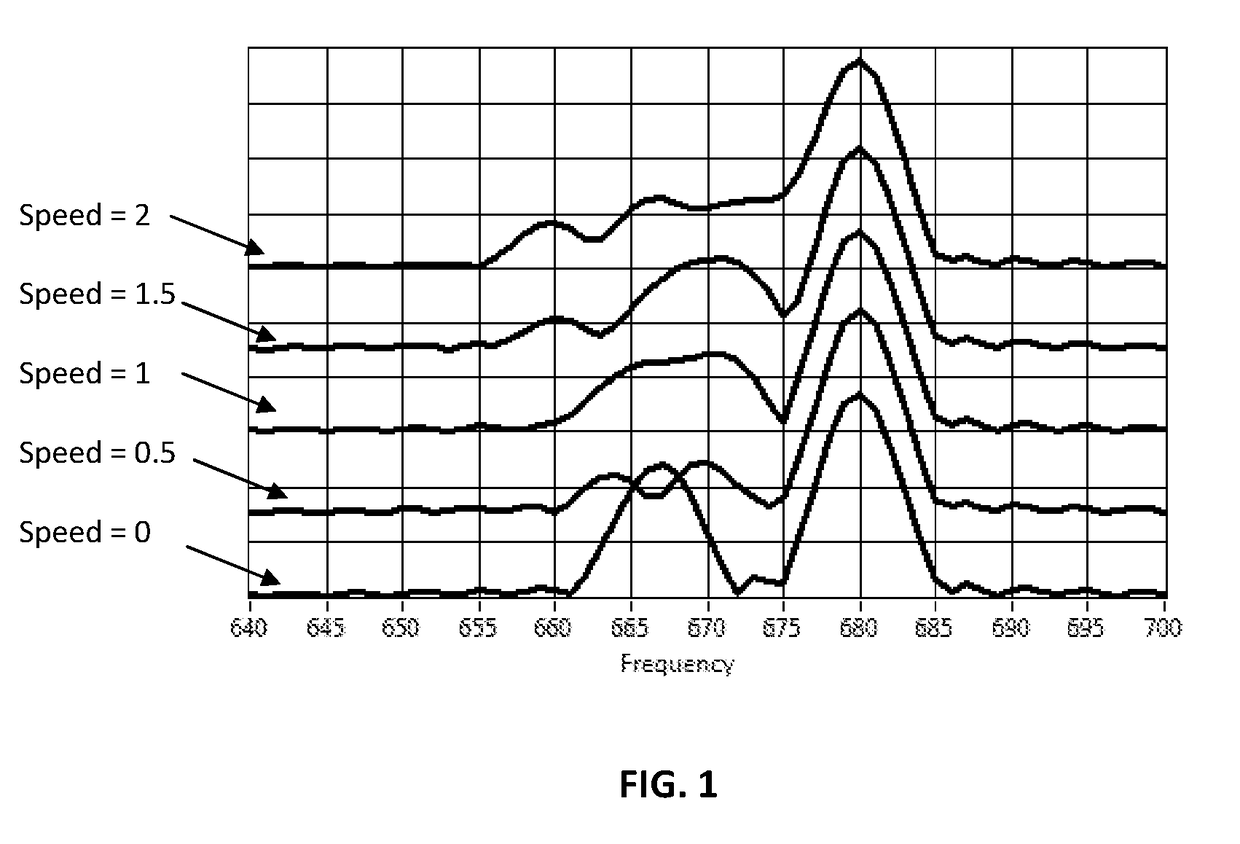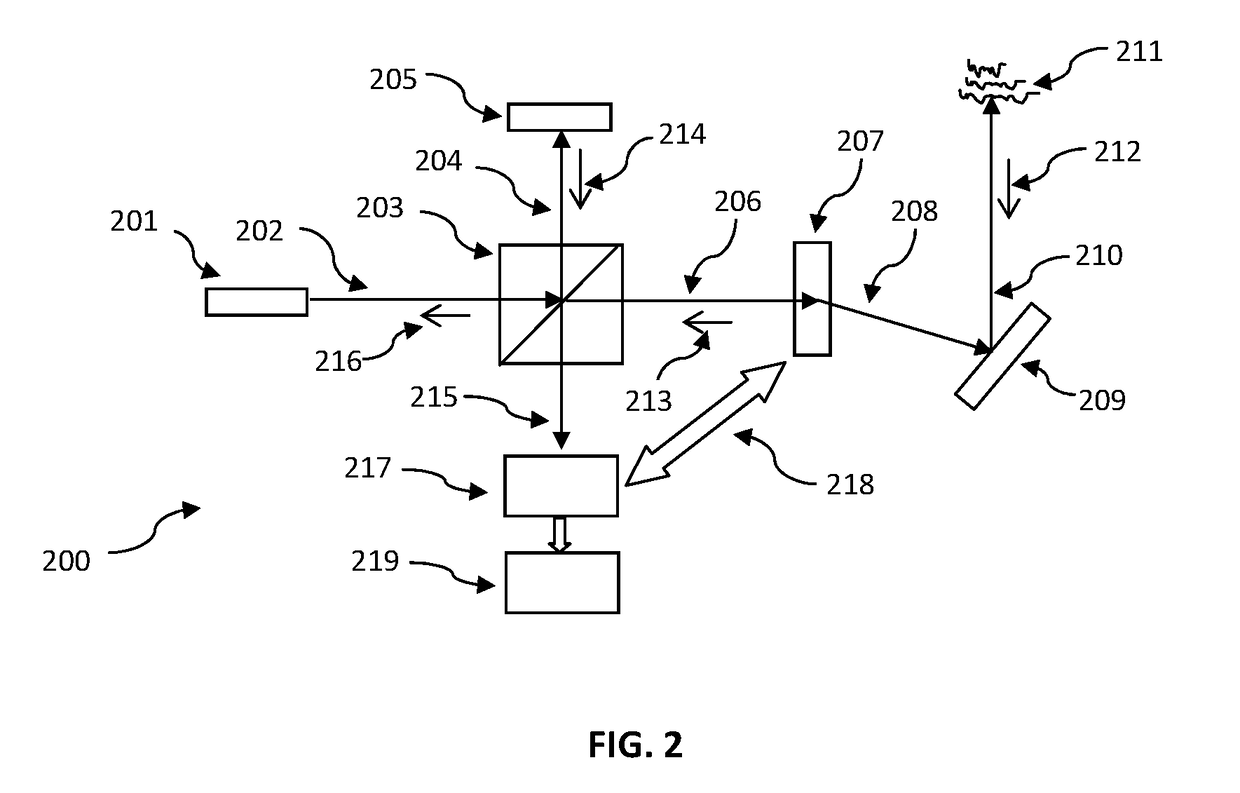Step-scanning sensing beam for imaging interferometer
a technology of imaging interferometer and sensing beam, which is applied in the direction of measuring devices, instruments, using optical means, etc., can solve the problems of challenging to support a large beam moving range, and to use a mechanical beam scanning device such as a scanning mirror
- Summary
- Abstract
- Description
- Claims
- Application Information
AI Technical Summary
Benefits of technology
Problems solved by technology
Method used
Image
Examples
Embodiment Construction
[0021]Scanning speckle error can be an issue in many types of interferometers. A scanning speckle error is essentially a temporal phase error associated with a temporal speckle field shift. Not all interferometers sensitive to phase shift have the scanning speckle issue. For example, an interferometer integrating time domain signals to exploit spatial phase information might not have a similar scanning speckle problem. Therefore, only interferometers sensitive to temporal phase shift are affected by scanning speckle error.
[0022]In an example of Swept-source OCT interferometer, scanning speckle error affects the precision of measuring the distance of a scattering feature just like in an FMCW LIDAR.
[0023]However, it is not obvious how scanning speckle error affects depth resolution, a much more concerned aspect than a length metrology aspect in OCT. In FIG. 1, simulated sweep-source OCT spectra with various beam scanning speeds are stacked over each other to illustrate the deteriorati...
PUM
 Login to View More
Login to View More Abstract
Description
Claims
Application Information
 Login to View More
Login to View More - R&D
- Intellectual Property
- Life Sciences
- Materials
- Tech Scout
- Unparalleled Data Quality
- Higher Quality Content
- 60% Fewer Hallucinations
Browse by: Latest US Patents, China's latest patents, Technical Efficacy Thesaurus, Application Domain, Technology Topic, Popular Technical Reports.
© 2025 PatSnap. All rights reserved.Legal|Privacy policy|Modern Slavery Act Transparency Statement|Sitemap|About US| Contact US: help@patsnap.com



